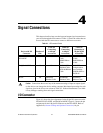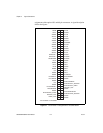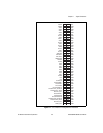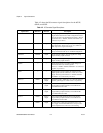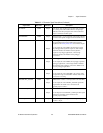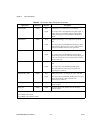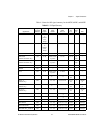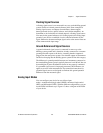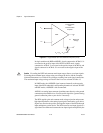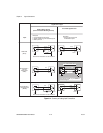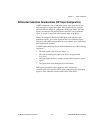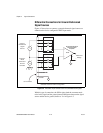Chapter 4 Signal Connections
© National Instruments Corporation 4-9 6023E/6024E/6025E User Manual
Floating Signal Sources
A floating signal source is not connected in any way to the building ground
system, but has an isolated ground-reference point. Some examples of
floating signal sources are outputs of transformers, thermocouples,
battery-powered devices, optical isolators, and isolation amplifiers. An
instrument or device that has an isolated output is a floating signal source.
You must tie the ground reference of a floating signal to the analog input
ground of your device to establish a local or onboard reference for the
signal. Otherwise, the measured input signal varies as the source floats out
of the common-mode input range.
Ground-Referenced Signal Sources
A ground-referenced signal source is connected in some way to the
building system ground and is, therefore, already connected to a common
ground point with respect to the device, assuming that the computer is
plugged into the same power system. Non-isolated outputs of instruments
and devices that plug into the building power system fall into this category.
The difference in ground potential between two instruments connected to
the same buildingpower system is typicallybetween 1 and 100 mV, but can
be much higher if power distribution circuits are not properly connected.
If a grounded signal source is improperly measured, this difference can
appear as an error in the measurement. The connection instructions for
grounded signal sources are designed to eliminate this ground potential
difference from the measured signal.
Analog Input Modes
You can configure your device for one of three input
modes—nonreferenced single ended (NRSE), referenced single ended
(RSE), and differential (DIFF). With the different configurations, you can
use the PGIA in different ways. Figure 4-3 shows a diagram of the PGIA
of your device.



